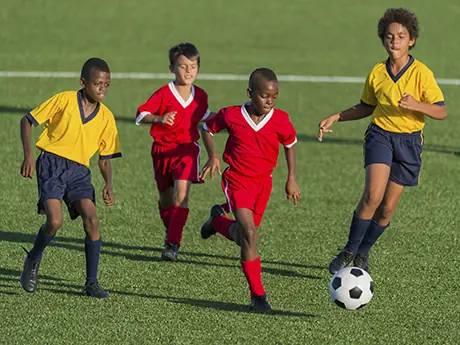
Soccer is one of the most popular sports in the world, but the Beautiful Game is still establishing itself in the United States compared to sports like football, basketball or baseball. If your child is interested in giving soccer a try, you may need to do a little research to learn more about the game.
One of the first things you should learn is the various positions on the field and the key skills and responsibilities required of each role. Your child may want to try out multiple positions early on to see where he or she fits best.
A starting lineup in soccer features 11 players. Tactical formations can vary, but one of the most popular formations features one goalkeeper, four defenders, four midfielders and two forwards.
More: Coaching Tips: Finding Space on the Soccer Field
Goalkeeper
Playing goalkeeper is arguably the most challenging position in soccer. The 'keeper may not run as much as the field players during the game, but one lapse in concentration can mean the difference between winning and losing (or tying). The goalkeeper carries a lot of responsibility and has to be a vocal leader during the game in order to keep the team organized defensively. The position also requires quick reactions and flexibility to make the occasional jumping or diving save.
Defenders
Also known as the "backline," the traditional four-player unit consists of a right back, a left back, and two center backs. These players need to be calm and have the ability take the ball off an attacker without committing a foul. The defenders form a line across the field between the goalkeeper and the midfielders, with the outside backs lined up slightly ahead of the center backs.
Center Backs
The center backs are often the tallest players on the field and are responsible for keeping track of the opposing team's forwards and snuffing out scoring opportunities before the goalkeeper is forced into action. A center back usually only joins the attack on set piece opportunities.
More: Coaching Tips: Creating Space with the Soccer Ball
Right Back/Left Back
The outside backs are typically speedier than the center backs and defend against attacking dribbles and crosses from the opponent's wingers. Outside backs may also be expected to join in the attack from time to time with overlapping runs; the ability to send in a cross from the flank is a big plus.
- 1
- of
- 2
About the Author










Discuss This Article